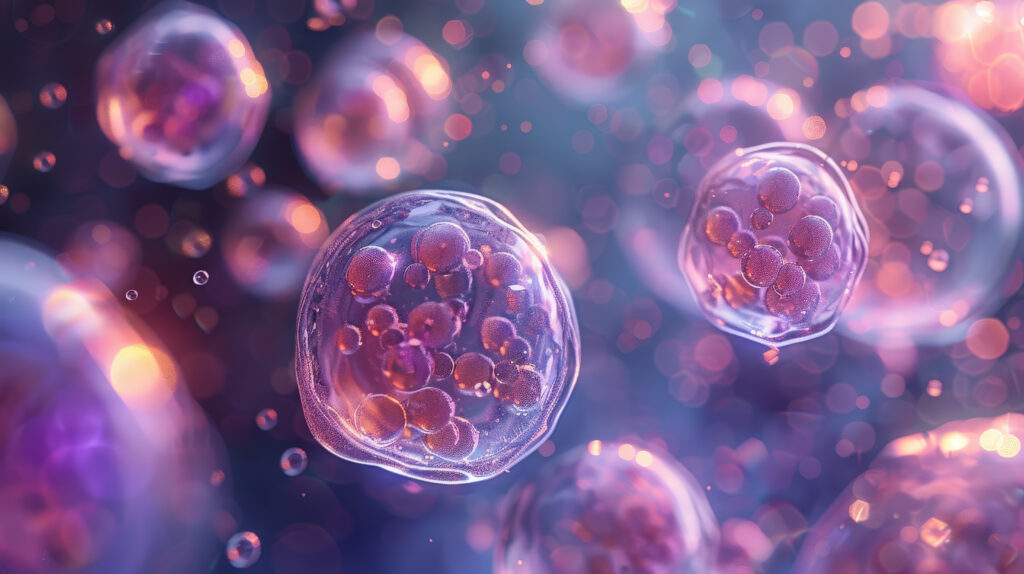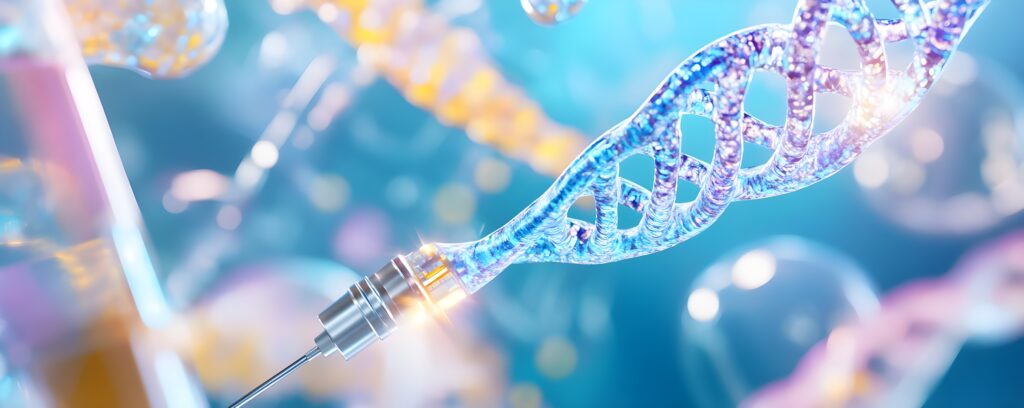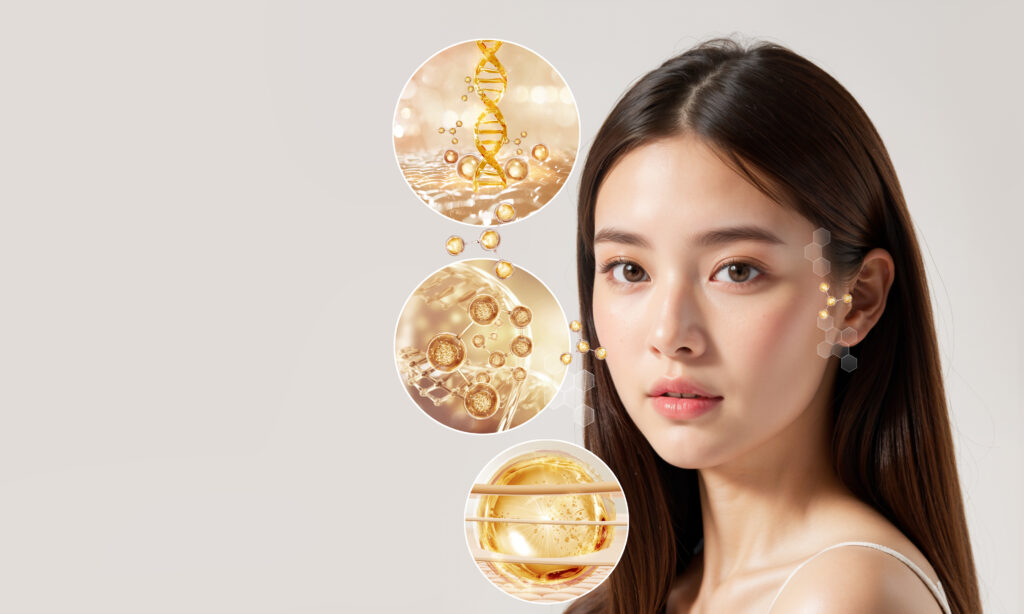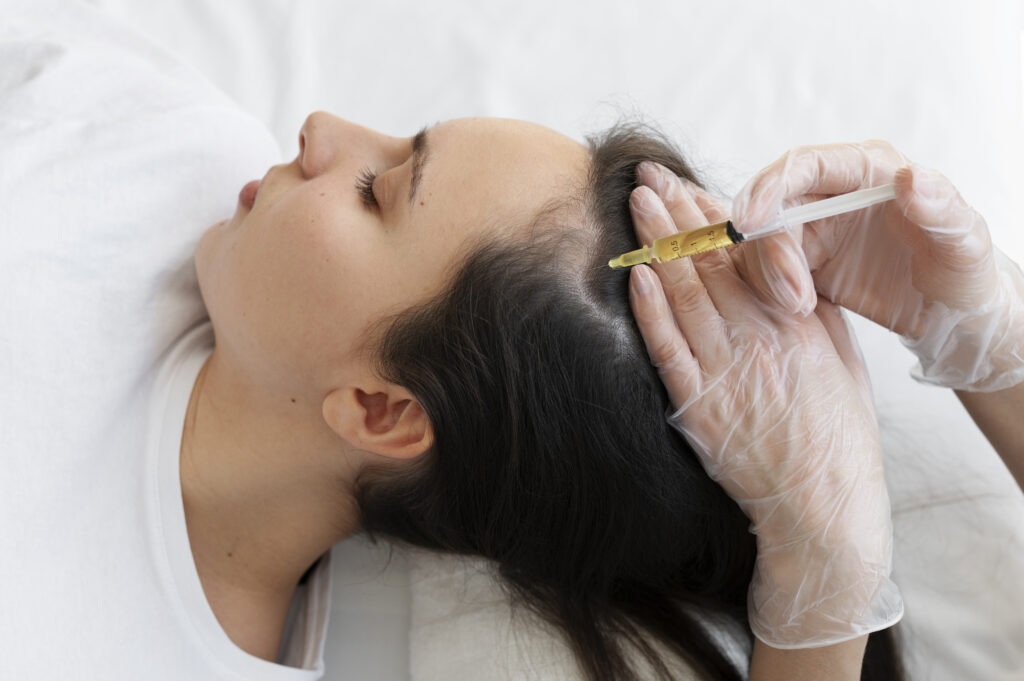Home » Our Services » Stemcell
What are cell therapy and stem cells? What are their benefits and important considerations before deciding to undergo the treatment?

The concept of body rejuvenation and anti-aging has long been discussed under a process called “Cell Therapy.” It began with the use of fresh fetal sheep cells injected into the body, known as Fresh Cell Therapy. Although it gained popularity at first, it was later found to have safety and legal limitations.
This led to the development of safer and more effective approaches using Stem Cells, which have the special ability to self-renew and transform into various types of cells to repair and deeply rejuvenate the body.
As a result, Stem Cells are now widely used for health care, anti-aging, and beauty purposes.
This article from Linna Clinic provides details about what Cell Therapy is, its different types, what Stem Cells are, their benefits, how to choose high-quality ones, how often to receive treatment, and how to take care of yourself before and after the procedure.
เซลล์บำบัด และ Stem Cell คืออะไร? ประโยชน์ และข้อควรรู้ก่อนตัดสินใจทำ
What is Cell Therapy?
Cell Therapy is a medical innovation for body rejuvenation that involves introducing living cells or cell extracts (Fresh Cells) with complete characteristics into the body. The goal is to stimulate and restore degenerated or aged cells caused by aging or illness, helping to slow down cellular deterioration and promote better strength and overall health.
How many types of Cell Therapy are there?
Cell therapy has been developed into several forms, such as:
- Fresh Cell Therapy The earliest form of cell therapy (early 20th century) used fresh cells from sheep or cow embryos injected into the body, based on the belief that living and healthy cells could effectively rejuvenate degenerated ones. This method was once popular in Germany and other countries but later declined due to a lack of scientific evidence, medical approval, and safety or legal concerns.
- Stem Cell Therapy This method uses human stem cells derived from sources such as umbilical cord, adipose tissue, blood, bone marrow, or teeth. Stem cells can self-renew and develop into various cell types, helping to restore and stimulate cell functions in the body. Nowadays, stem cell therapy is widely studied and applied in health restoration, aesthetics, and anti-aging, though further research is still ongoing to confirm its safety and long-term efficacy.
- Exosome Therapy Unlike the previous two methods, Exosome Therapy does not use living cells directly. Instead, it uses Exosomes — nano-sized biological particles released from stem cells that contain proteins, enzymes, and biomolecules. When injected into the skin, they help facilitate cell communication, stimulate collagen production, reduce inflammation, and strengthen the skin from within. This therapy is popular in the aesthetic field, improving skin quality, resilience, and helping to reduce wrinkles and dark spots.

What is a Stem Cell?
A Stem Cell is an immature cell that does not yet have a specific function like other cells in the body. It has two key properties:
Self-Renewal – Stem Cells can continuously divide and create new, non-specialized stem cells over a long period. This means they remain “fresh” and ready for the body to use whenever needed.
Differentiation – When the body needs to repair or restore damaged tissues, Stem Cells can transform into specific types of cells, such as blood cells, skin cells, nerve cells, muscle cells, cartilage cells, or fat cells.
In theory, Stem Cells are considered the “master cells of the body,” capable of developing into specialized cells when stimulated. They replace old or damaged cells, helping the body repair and return to normal function.
Because of these remarkable properties, Stem Cells are widely applied in medicine, health care, anti-aging, and aesthetic fields. However, as ongoing studies continue to explore their safety, effectiveness, and long-term outcomes, the medical community still holds diverse opinions regarding the extent of their practical use.
Sources of Stem Cells
Stem Cells come from various sources, each with different properties and potentials. The choice of use depends on the individual’s goals:
Human Stem Cells (MSC) – Allogeneic
These are stem cells from a donor (another person), usually young, carefully screened for quality and safety. The most common source is the umbilical cord, but they can also be collected from adipose tissue, blood, placental blood, bone marrow, and teeth. Advantages include similarity to human body cells, young cell age, and low risk of mutation, making them suitable for body rejuvenation and health restoration, especially for older individuals.Embryonic Stem Cells
Derived from blastocyst-stage embryos (4–7 days after fertilization), these stem cells have high potential, can divide indefinitely, and transform into any cell type in the body. However, their use involves ethical debates and legal restrictions that must be carefully considered.Organ-Specific MSC
This concept uses MSC stem cells targeted to specific organs, such as cartilage, heart, liver, or the nervous system, to maximize repair and therapeutic effects. Currently, this is a future prospect in medical applications, requiring further research and development.Autologous Stem Cells
These are stem cells harvested from the patient’s own body, usually from blood, bone marrow, or fat. The main advantages are compatibility with the body, reduced risk of immune reactions or side effects, and faster recovery.

Applications of Cell Therapy and Stem Cells
Current Applications of Cell Therapy and Stem Cells
Today, Cell Therapy and Stem Cells are widely used in regenerative medicine, anti-aging, and aesthetics, including:
- Holistic Health Restoration – Stem Cells can repair and rejuvenate damaged tissues such as muscles, blood vessels, and other vital organs, helping them function more effectively.
- Aesthetic and Skin Care – Stem Cells are applied in skin and beauty treatments to slow aging, reduce wrinkles, and restore skin condition from within.
- Hair Care – Stem Cells help stimulate hair follicles, reduce hair loss or thinning, and promote stronger, fuller hair.
Repair of Joints, Cartilage, and Nerves – Stem Cells are being explored to regenerate degenerated joints or cartilage and repair nerve damage, benefiting those with chronic injuries or conditions that do not respond well to medications or conventional treatments.
Benefits of Stem Cells
Stem Cells are a widely recognized innovation due to their powerful regenerative and restorative properties, offering benefits such as:
- Repairing and restoring internal health – Stem Cells replace damaged or degenerated cells, supporting the optimal function of heart, muscles, nervous system, blood vessels, and bones.
- Alleviating certain medical conditions – They may help improve symptoms of degenerative neurological disorders, osteoarthritis, immune system-related diseases, and cancer.
- Slowing cellular aging – Stem Cells help delay cell deterioration, promoting long-lasting strength, vitality, and overall wellness.
- Rejuvenating skin – Enhance skin health, reduce wrinkles, increase collagen and elastin, and improve elasticity and radiance.
- Improving hair health – Reduce hair loss, strengthen hair, and promote thicker, healthier hair growth.
- Enhancing quality of life – Support daily activities, improve overall well-being, and boost self-confidence.

What is a Stem Cell Passage and Which Type is High-Quality?
Passage refers to the number of times stem cells are transferred to a new culture vessel in the laboratory to allow continuous and efficient cell division. However, higher passages may affect cell quality and cause changes in their characteristics.
Most doctors recommend using low-passage stem cells (P3–P5), as they are more likely to produce better results. These cells retain strong abilities to self-renew, adapt, and fully differentiate into specific cell types.
Are Stem Cells Dangerous?
In general, the use of Stem Cells is considered safe when performed under the supervision of experienced medical professionals and using high-quality, properly certified cells.
However, the risk increases if uncertified stem cells are used or if the procedure is done in unregulated clinics by personnel lacking specialized expertise. This may lead to complications such as severe inflammation, infections, or unsatisfactory results.
How Often Should Stem Cells Be Administered?
In general, Stem Cells can be administered every 6–12 months. The frequency depends on the type of stem cells, individual health, and treatment goals. For optimal effectiveness and safety, patients should follow the treatment protocol recommended by their supervising physician.
How Long Do Stem Cells Last?
The effects of Stem Cell therapy can last from several months to several years, depending on factors such as the injection site, age, overall health, quality of the stem cells used, and post-treatment care.
To maintain optimal results, patients should receive treatment at standardized clinics using high-quality stem cells, follow their physician’s instructions carefully, and undergo repeat stem cell sessions as recommended for sustained benefits.
Who Are Stem Cells Suitable For?
Stem Cell therapy may benefit individuals who:
- Want to restore overall health.
- Experience age-related decline or general bodily deterioration.
- Wish to maintain youthful skin and slow aging.
- Have issues with hair loss or thinning hair.
- Suffer from inflammation or degenerative conditions, such as osteoarthritis, rheumatoid arthritis, or tissue degeneration.
- Have blood or immune system disorders.
- Have certain heart and vascular conditions.
Patients should consult a physician for a thorough assessment, providing complete health information, including medical history, chronic illnesses, and drug allergies, to evaluate risks and develop a safe, personalized Stem Cell treatment plan.
It is important to understand that Stem Cell therapy is a supportive approach to help restore and balance the body, and is not a direct cure, so it cannot replace standard medical treatments.
Pre- and Post-Care for Stem Cell Therapy
Before Stem Cell Treatment:
- Initial Health Check: Provide information on chronic illnesses, medications, and supplements to assess risks before the procedure.Consult Your Doctor: Discuss expected results to plan the treatment appropriately.
- Avoid Certain Medications: Stop blood thinners (as advised by your doctor), NSAIDs, immunosuppressants, and antibiotics at least 7 days prior.
- Avoid Risky Activities and Procedures: Refrain from activities or treatments that may cause wounds, such as Botox, fillers, thread lifts, and laser procedures, for 1–2 weeks before.
- Adequate Rest: Sleep 8–12 hours to prepare your body.
- Healthy Diet: Eat nutritious meals and avoid fried or oily foods 2–3 days before the procedure.
After Stem Cell Treatment:
- Rest: Avoid strenuous work or intense exercise for the first 1–2 days.
- Avoid Anti-Inflammatory Drugs: Refrain from NSAIDs and steroids for 4–6 weeks to prevent interference with stem cell activity.
- Hydration: Drink plenty of clean water to support recovery.
- Nutritious Diet: Focus on foods rich in antioxidants.
- Avoid Smoking and Alcohol: Abstain for 3–7 days as they may hinder recovery.
- Limit Exposure: Avoid outdoor activities that involve sunlight, pollution, dust, or crowded areas for at least 3 days to reduce infection risk.
- Follow-Up Appointments: See your doctor as scheduled to monitor progress and assess your body’s response.
Summary
Early cell therapy began with Fresh Cell Therapy, which directly injected live animal embryonic cells into the human body. Although once popular, this method is no longer accepted in modern medicine due to lack of reliable evidence, safety concerns, and legal restrictions.
Advancements have led to the use of Stem Cells, which can self-renew and differentiate into specialized cells, providing deeper repair and regeneration for the body. Stem Cells are now applied in health restoration, anti-aging, and beauty treatments, with several types available, including Human Stem Cells, Embryonic Stem Cells, Organ-Specific MSC, and Autologous Stem Cells.
However, Stem Cell therapy is still under ongoing research to fully verify safety and effectiveness. It is a complex procedure requiring precision, so treatments should be conducted only at standardized clinics with proper medical equipment, high-quality stem cells with appropriate passages, and close supervision by experienced physicians.
For those seeking to enhance health, restore youthfulness, and improve quality of life, Stem Cell therapy may be a suitable option. To consult or plan your treatment with the medical team at LINNA Clinic, contact us at 063-609-8888, WhatsApp +66 919799554, or LINE: @linnaclinic.
